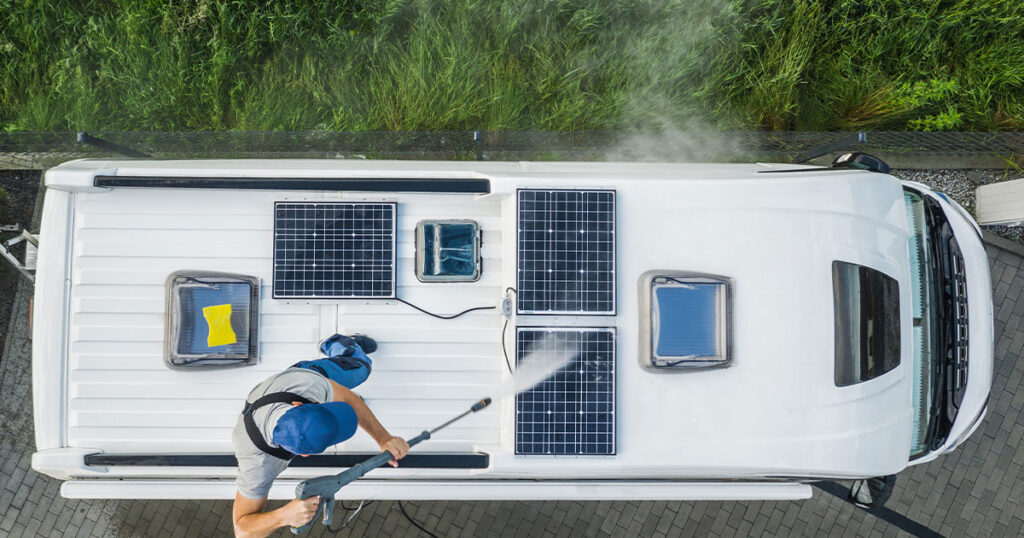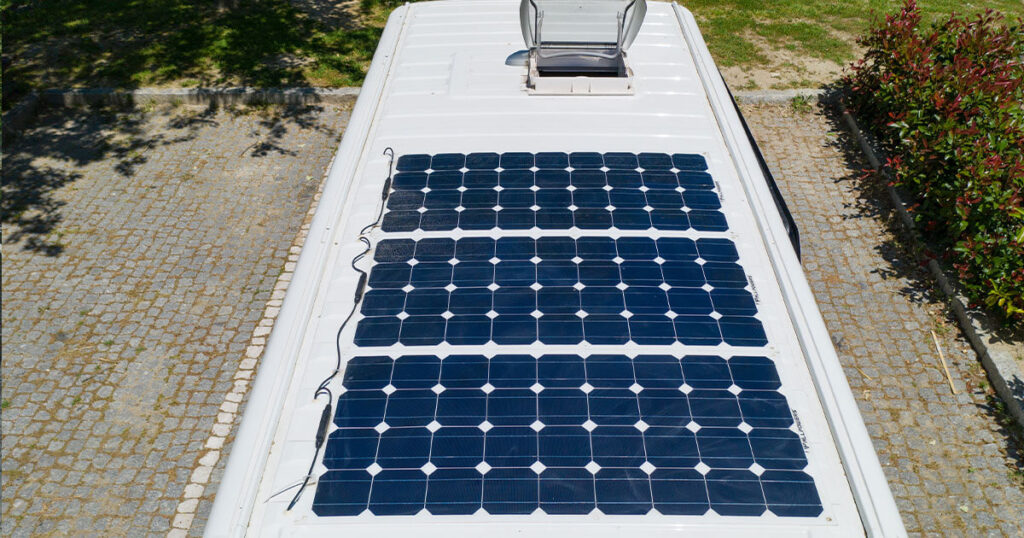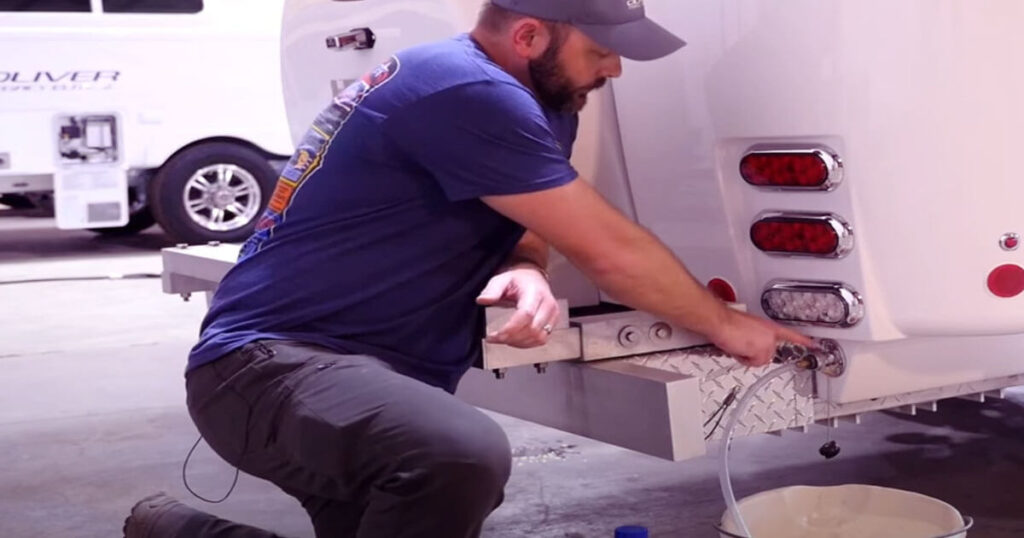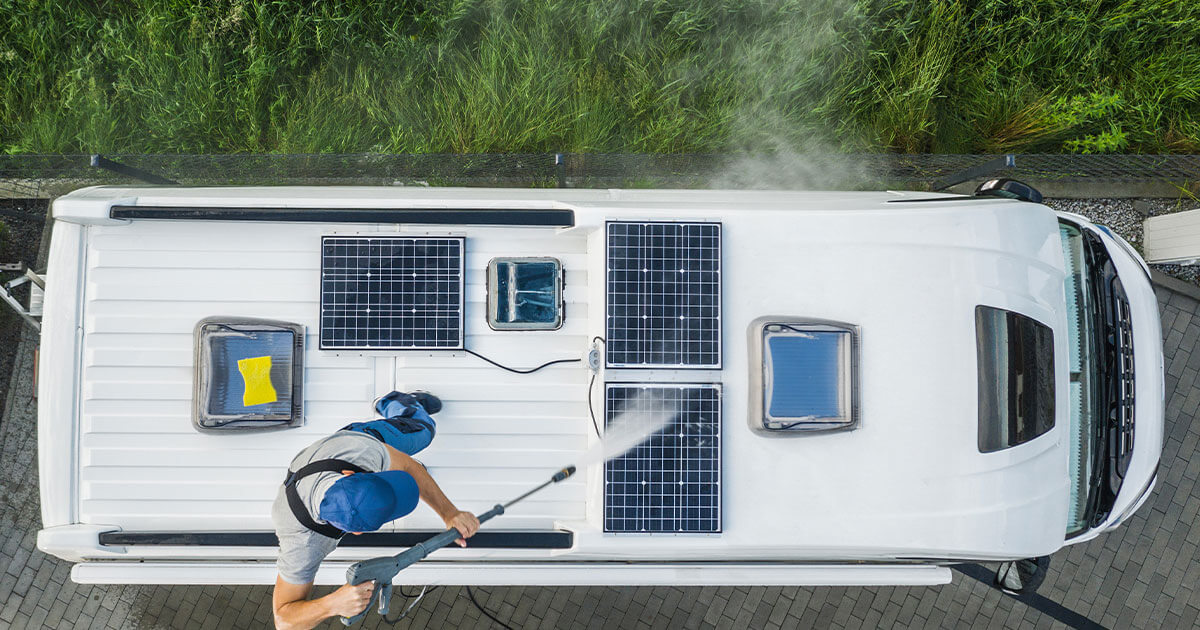In 2025, travel trailer ownership is surging, making routine maintenance vital for safe, hassle-free adventures. Whether full-time or weekend camping, regular checks prevent costly repairs and extend RV life. Searching for a “2025 travel trailer maintenance checklist” or “DIY camper care tips”? This guide offers expert tips, covering eco-friendly trends, smart tech, roofs, tires, and systems for confident upkeep.

Roof & Exterior: Shield Your RV from the Elements
Your trailer’s roof is its first defense against weather, so inspect it quarterly for cracks, seals, and debris. For rubber roofs, apply a UV protectant annually to prevent drying and leaks—common issues in older models. Clean with mild soap, avoiding harsh chemicals that could degrade materials.
Exterior-wise, wash regularly to spot rust or damage early, and reseal seams with RV-specific caulk. In 2025, consider adding solar panels during inspections for dual maintenance and energy benefits.

Tires & Undercarriage: Boost Safe RV Towing
Tires top the list of common problems—check pressure before every trip using a gauge, inflating to manufacturer specs. Inspect for uneven wear, cracks, or bubbles, and rotate every 5,000-8,000 miles. Don’t forget wheel bearings: Repack them annually or every 12,000 miles to avoid breakdowns.
For the undercarriage, torque lug nuts, check brakes, and lubricate suspension components. These steps are crucial for safe towing and reducing risks on long hauls.
RV Water & Plumbing: Prevent Messy Surprises
Flush and sanitize your water system seasonally with a bleach solution to prevent bacteria buildup. Empty black and gray tanks after each use, adding enzymes to control odors. For winterizing, drain lines and add antifreeze to protect against freezes—a must in colder climates.
Common fixes include unclogging valves or replacing leaky faucets—simple DIY jobs with basic tools. Smart sensors in 2025 models can alert you to low levels, making upkeep easier.

RV Battery & Electrical: Ensure Reliable Power
Batteries often fail unexpectedly—test voltage monthly and clean terminals to prevent corrosion. For lithium upgrades popular in 2025, monitor with apps for optimal charging. Check fuses, wiring, and lights; replace bulbs with LEDs for efficiency.
If dead, jump-start carefully or use a charger—avoid over-discharging to extend life.
RV Common Issues & Quick Fixes
Roof leaks? Reseal promptly to stop water damage. Plumbing clogs? Use a plunger or enzyme cleaners. Tire blowouts? Carry spares and monitor age (replace every 5-7 years). Slide-outs sticking? Lubricate rails and check alignment.
2025 RV Maintenance Checklist: Quick Guide
| Task | Frequency | Why It Matters |
|---|---|---|
| Roof Inspection | Quarterly | Prevents leaks and UV damage |
| Tire Pressure Check | Before Each Trip | Ensures safe towing and longevity |
| Tank Emptying/Cleaning | After Each Use | Avoids odors and blockages |
| Battery Test | Monthly | Maintains power reliability |
| Seal Resealing | Annually | Protects against water intrusion |
| Bearing Repack | Every 12,000 Miles | Reduces breakdown risks |
| Water System Sanitize | Seasonally | Keeps water safe and fresh |
This table serves as a handy “DIY travel trailer maintenance checklist for 2025,” customizable to your rig.
Proactive maintenance saves time and money—schedule reminders via apps for consistency. Pair these tips with our past guides on destinations or features for a well-rounded RV lifestyle.
What’s your go-to maintenance hack? Comment below to share with the community!
Inspect quarterly for cracks, seals, and debris. Apply UV protectant annually.
Drain lines, add antifreeze, protect against freezes in colder climates.
Test voltage monthly, clean terminals, top off with distilled water, avoid over-discharging.
Includes roof inspections quarterly, tire checks before trips, water sanitizing seasonally, battery tests monthly, seal resealing annually.
Flush seasonally with bleach solution, empty tanks after use, add enzymes for odors.
Annually or every 12,000 miles to prevent breakdowns.
Reseal promptly with RV caulk to stop water damage; clean and inspect regularly.
Check pressure before trips, inspect for wear, rotate every 5,000-8,000 miles, replace every 5-7 years.
Empty after use, add enzymes to control odors, flush with water seasonally.
Check for dirty filters, refrigerant issues, or compressor problems; clean filters regularly.

